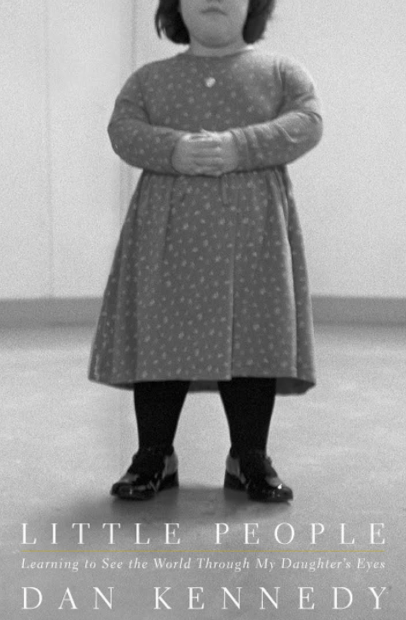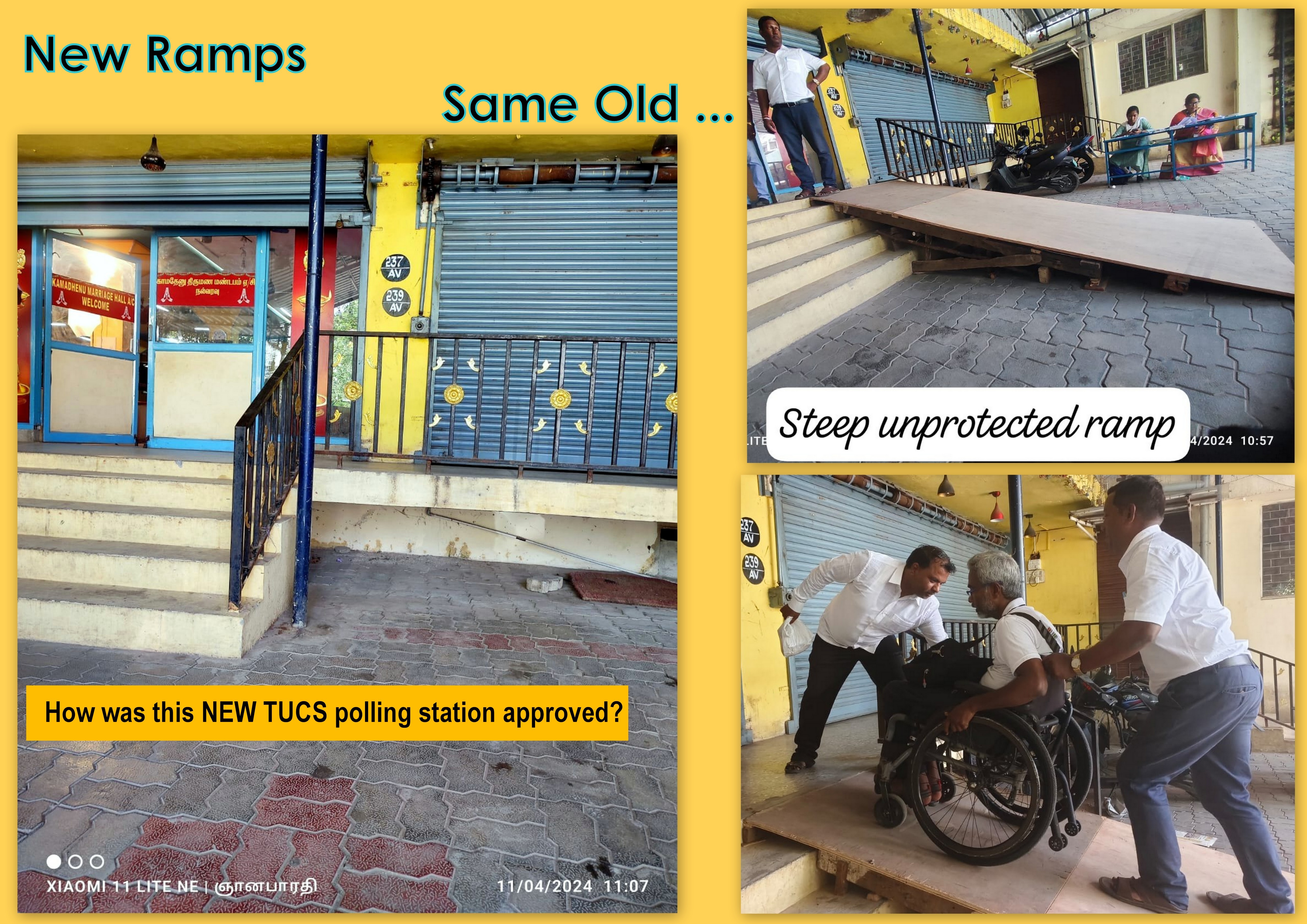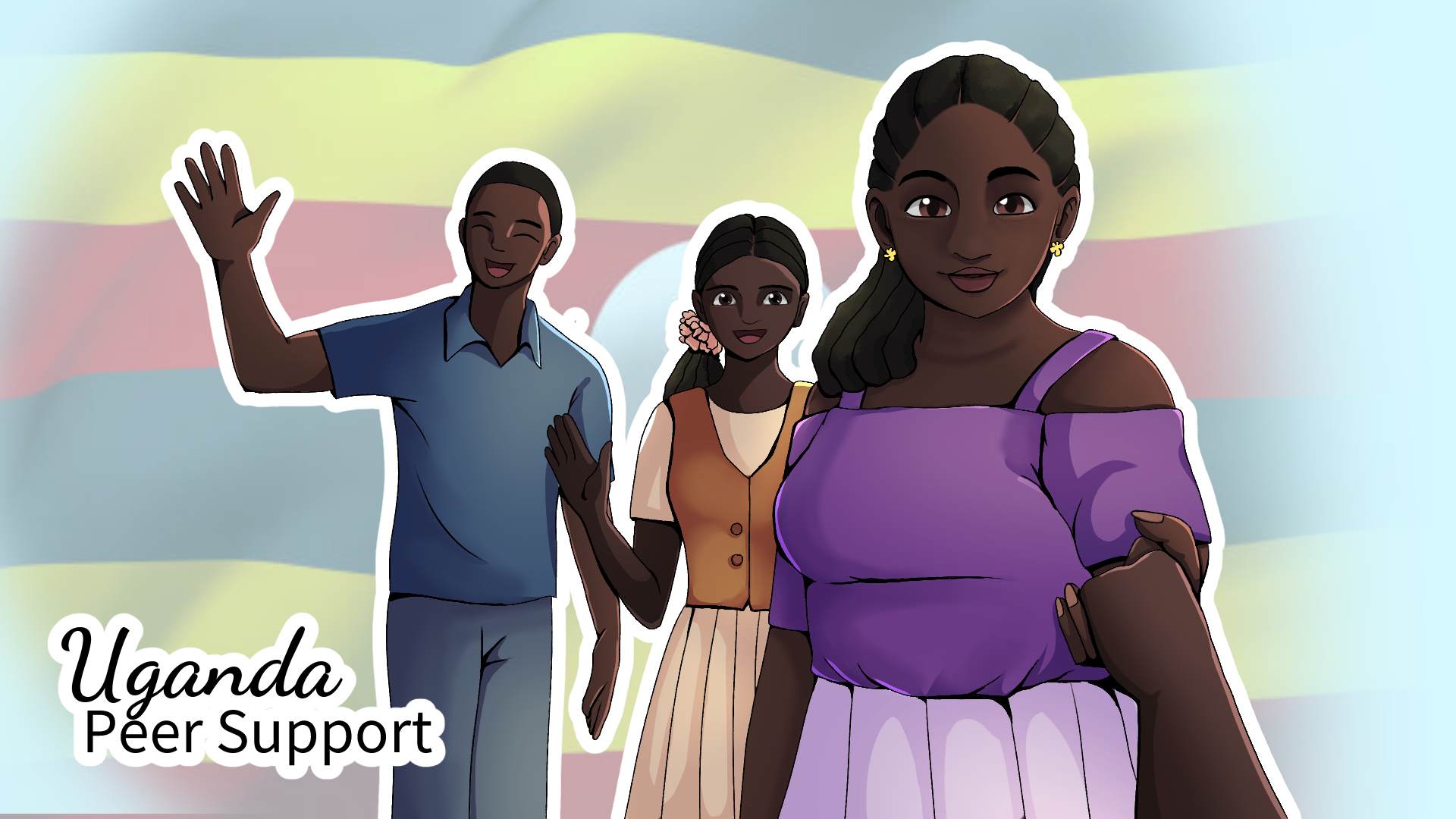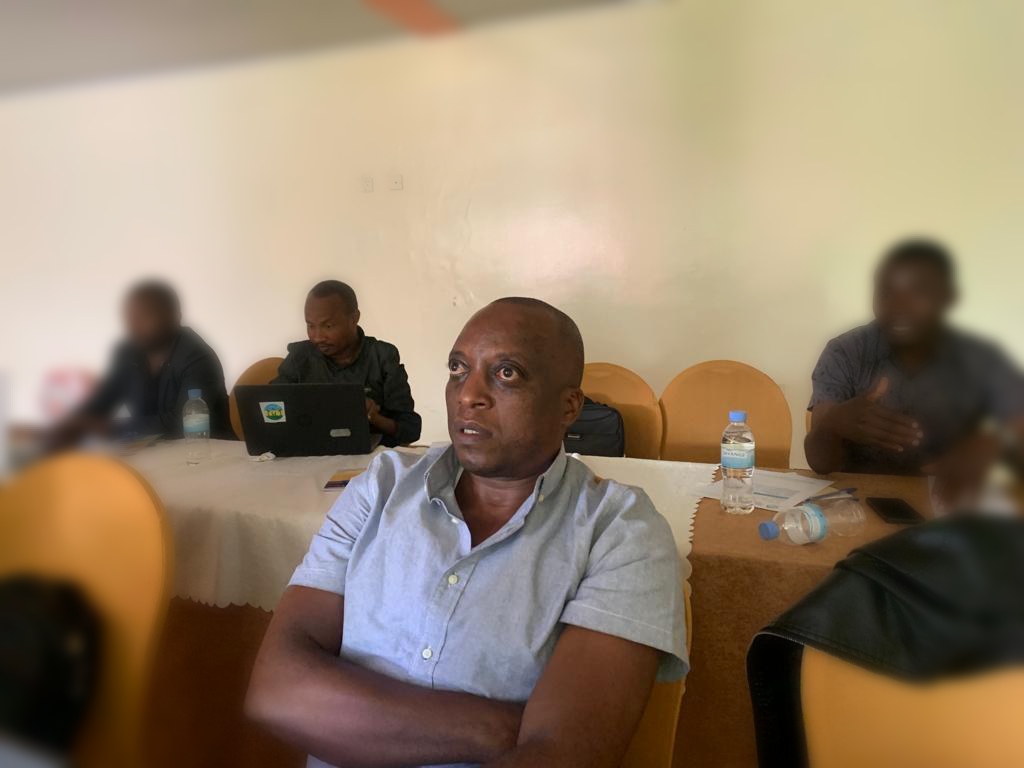
News
Dwarfism and the Importance of Universal Design
Play audio version
Rather Than Forcing People With Disabilities to Adapt to an Environment that Excludes Them, We Should Build a World Accessible to Everyone
February 28, 2022
Editor’s Note: This essay is adapted from DJP mentor Dan Kennedy’s book “Little People: Learning to See the World Through My Daughter’s Eyes” (Rodale 2003). Its discussion of inaccessibility issues connects to the DJP’s commitment to amplifying the voices of activists in the pursuit of global disability rights. Several of our fellows also have covered issues of accessibility (or lack of) in their reports for the DJP.
Early on during my week in Salt Lake City, where the Little People of America national conference was held in 2002, I went out to dinner with Robert Van Etten and his wife, Angela Muir Van Etten. Robert, a 52-year-old rehabilitation engineer, is a past president of LPA; his dwarfism type is SED, and he’s 3-foot-5. Angela, 48, is a past president of Little People of New Zealand, her native country. She has an exceedingly rare form of dwarfism known as Larsen syndrome and stands 3-foot-4. Like many middle-aged people with dwarfism, their mobility is limited but not entirely absent. Robert rode their wheelchair to the restaurant but told Angela that she could ride it back to the hotel.
Both Van Ettens have been heavily involved with access issues over the years — especially Angela, a lawyer who was appointed to serve on LPA’s so-called ANSI Committee, part of the American National Standards Institute. ANSI is a private organization that drafts model accessibility codes. Its codes are not law but are often adopted by government regulatory agencies. The issue is one that has preoccupied her since her youth. In her autobiography, Dwarfs Don’t Live in Doll Houses (note: she published her latest book, Always an Advocate, in 2021), she writes of the frustration she encountered in law school in New Zealand, where the elevator buttons were just out of reach:
The law library was on the fifth floor and the lecture rooms were on the sixth. However, the highest button I could reach on the elevator was number four! On the days when I was feeling energetic, I would walk the extra one or two floors, but that wasn’t very often. Otherwise, I would wait for someone to come or use an object such as my pencil case or umbrella to reach the button.
Things are better today, better in the United States than in New Zealand and most other countries, and getting better all the time. But there is still a long way to go. Angela Van Etten told me about her advocacy work in the U.S. during the past decade. It was a long, tangled tale of bureaucracy run amok, but basically what happened was this. When the Americans with Disability Act was signed by the first President Bush, Little People of America was not as involved as it should have been on disability issues, and thus the specific needs of dwarfs were not addressed. Automatic teller machines — ATMs — as well as self-service gasoline pumps were set at no more than 54 inches high, which is within the reach of a wheelchair-user with average-size arms but not within the reach of most little people.
LPA undertook a study — actually measuring people at a national conference — and found that 48 inches was the maximum height that most dwarfs could reach. After years of agitating, ANSI and the federal government finally went along with a 48-inch height for ATMs, and it is moving in that direction for gas pumps as well. The elevator industry has also proved cooperative, mainly because new computer technology will allow for the installation of just a few buttons on elevators even in very tall buildings rather than the one-button-per-floor arrangement that is predominant today. The revised standards pertain only to new construction, and it will no doubt take many years before their effects are widely seen. Still, they are a crucial step in the right direction.
“We don’t care how you do it,” Angela told me, describing the ANSI philosophy. “We don’t ask you to lower anything. If you can’t lower it for whatever reason, just provide an alternative. It’s usability that we’re looking for. I’ve actually said this to them: ‘We do not expect the world to get down on its knees.’ It’s a matter of industry will to recognize this population. They generally will not do it unless you make them.”

The concept behind accessibility is something that advocates refer to as “universal design.” The idea is to make facilities accessible to the disabled and able-bodied alike, and to do it in such a way that it not only doesn’t inconvenience the able-bodied but actually helps them. The classic example is curb cuts, which have turned out to be as much of a godsend for parents pushing strollers as for wheelchair-users.
Cara Egan, a 35-year-old former vice president of public relations for LPA who has achondroplasia, wrote her master’s thesis at Johns Hopkins University on LPA’s role in public-policy areas such as accessibility. She was so busy in Salt Lake that I didn’t have a chance to interview her. But I caught up with her at her home near Washington, D.C., several weeks later. At one point I walked up to an ATM to get some money for the parking garage. It was at a comfortable level for me, but barely reachable for her. She asked, “Would it really have inconvenienced you if the machine had been built maybe a foot lower?” Of course not, I replied.
That led to a discussion of one of the principal arguments for limb-lengthening surgery: that it makes dwarfs more functional in a human-made environment built for people between five and six feet tall. “I think that’s bullshit,” Egan said, explaining that such a philosophy assumes it’s the person who should be changed rather than the environment. The beauty of universal design, she said, is that it makes things accessible for everyone. “I was able to get down to the Metro today, park my car, put money in the meter, go down and get a Metro fare card, go downtown, and I didn’t have to ask anybody for anything,” she said. “We have shown that we can do it, so why not do it? We’ve got the creative energy. I think that’s a total cop-out. My mother is 5-9. She goes into the grocery store and there are things that she cannot reach. And she will ask somebody to help her.”
Egan does most of her own grocery-shopping at a store in nearby Rockville, Maryland, that has been redesigned with shorter shelves and smaller carts. “And it’s not like the tall people are staying away, because it’s easier for everybody,” she said. “I just think we’re getting smarter about how things are designed.”
Dan Kennedy is a professor of journalism at Northeastern University and the father of an adult daughter with achondroplasia, the most common form of dwarfism. This essay is adapted from Kennedy’s book “Little People: Learning to See the World Through My Daughter’s Eyes” (Rodale 2003) and is reprinted with permission under a Creative Commons license, which may be viewed at littlepeoplethebook.com.
News From the Global Frontlines of Disability Justice

Advancing Democracy
Rwanda has made significant progress in making its elections more accessible, highlighted by the July 15 general elections where notable accommodations were provided. This was a major step forward in disabled Rwandans’ quest for equal rights and participation. “You cannot imagine how happy I am, for I have voted by myself and privately as others do accessibly,” says Jean Marie Vianney Mukeshimana, who used a Braille voting slate for the first time. “Voting is a deeply emotional and meaningful experience for a person with any disability in Rwanda, reflecting a blend of pride, empowerment, and hope.”

Barriers to the Ballot
Despite legislation like the Americans with Disabilities Act, barriers at the polls still hinder — and often prevent — people with disabilities from voting. New restrictive laws in some states, such as criminalizing assistance with voting, exacerbate these issues. Advocacy groups continue to fight for improved accessibility and increased voter turnout among disabled individuals, emphasizing the need for multiple voting options to accommodate diverse needs. ““Of course, we want to vote,” says Claire Stanley with the American Council of the Blind, “but if you can’t, you can’t.”

Democracy Denied
In 2024, a record number of voters worldwide will head to the polls, but many disabled individuals still face significant barriers. In India, inaccessible electronic voting machines and polling stations hinder the ability of disabled voters to cast their ballots independently. Despite legal protections and efforts to improve accessibility, systemic issues continue to prevent many from fully participating in the world’s largest democracy. “All across India, the perception of having made a place accessible,” says Vaishnavi Jayakumar of Disability Rights Alliance, “is to put a decent ramp at the entrance and some form of quasi-accessible toilet.”

Triumph Over Despair
DJP Fellow Esther Suubi shares her journey of finding purpose in supporting others with psychosocial disabilities. She explores the transformative power of peer support and her evolution to becoming an advocate for mental health. “Whenever I see people back on their feet and thriving, they encourage me to continue supporting others so that I don’t leave anyone behind,” she says. “It is a process that is sometimes challenging, but it also helps me to learn, unlearn, and relearn new ways that I can support someone – and myself.”

‘Our Vote Matters’
As Rwanda prepares for its presidential elections, voices like Daniel Mushimiyimana’s have a powerful message: every vote counts, including those of citizens with disabilities. Despite legal frameworks like the UN Convention on the Rights of Persons with Disabilities, challenges persist in translating these into practical, accessible voting experiences for over 446,453 Rwandans with disabilities. To cast a vote, blind people need to take a sighted relative to read the ballot. An electoral committee member must be present, violating the blind person’s voting privacy. “We want that to change in these coming elections,” says Mushimiyimana.

Voices Unsilenced
Often dismissed as a personal concern, mental health is a societal issue, according to Srijana KC, who works as a psychosocial counselor for the Nepali organization KOSHISH. KC’s own history includes a seizure disorder, which resulted in mental health challenges. She faced prejudice in both educational settings and the workplace, which pushed her towards becoming a street vendor to afford her medications. Now with KOSHISH, she coordinates peer support gatherings in different parts of Nepal. “It is crucial to instill hope in society, recognizing that individuals with psychosocial disabilities can significantly contribute,” she says.